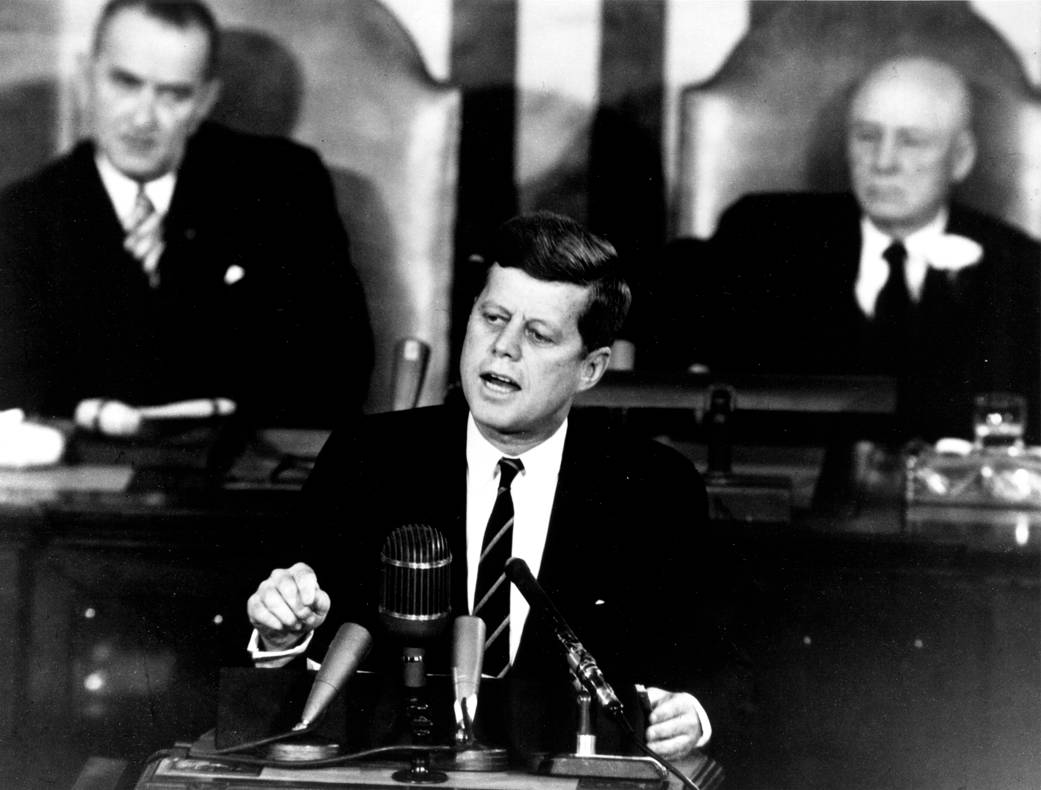“We choose to go to the moon. We choose to go to the moon in this decade, and do the other things, not because they are easy, but because they are hard, because that goal will serve to organize and measure the best of our energies and skills, because that challenge is one that we are willing to accept, one we are unwilling to postpone, and one which we intend to win, and the others, too.”
For the young president, it was an audacious move: the announcement, before a special joint session of Congress on May 25, 1961, that the United States would commit to a lunar landing before 1970. It was a message Kennedy reasserted before an audience at Rice University in Houston, Texas on September 12, 1962.
Fulfilling Kennedy’s promise would require unprecedented effort across NASA. One essential Langley contribution was the lunar-orbit rendezvous (LOR) concept. Langley was home to several of the most significant facilities used to develop LOR techniques and prepare astronauts for Apollo missions. Langley tested the Saturn-Apollo vehicle in wind tunnels, and trained 24 astronauts in rendezvous and docking, Lunar Excursion Module landing, and reduced-gravity walking.
Kennedy’s vision was realized as Apollo 11 touched down in the moon’s Sea of Tranquility at 4:18 p.m. Eastern Daylight Time on July 20, 1969. With more than half a billion people glued to their television sets, at 10:56 p.m. astronaut Neil Armstrong clambered down the lunar lander ladder and proclaimed “That’s one small step for a man, one giant leap for mankind.”
Of the 11 Apollo flights, six would land astronauts. The final lunar-landing mission concluded on December 19, 1972, with the safe return to Earth of Apollo 17. Project Apollo revealed to the entire world indelible images of what some called a “blue marble” suspended in the ebony vastness of space.



























